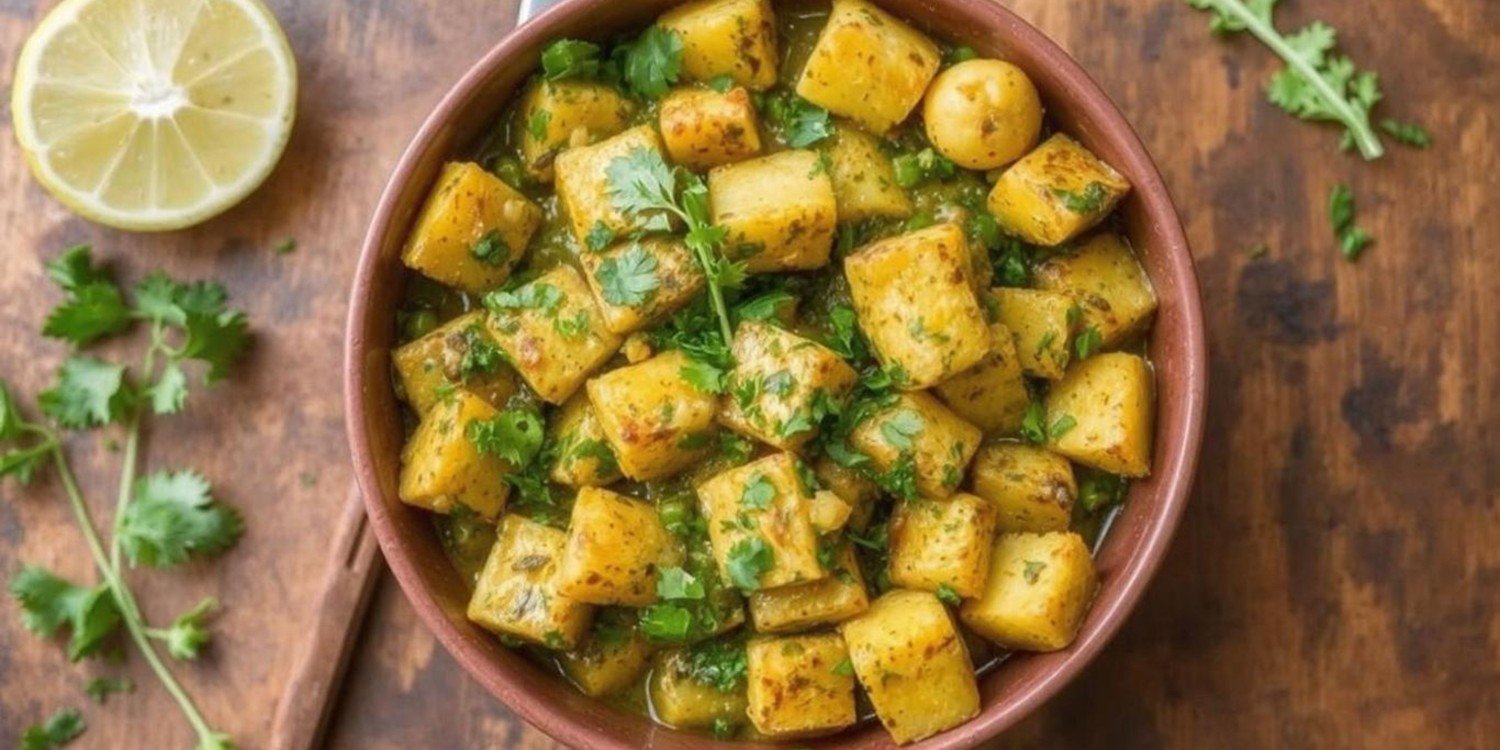

Dt. Natasha Mohan
Dietitian Natasha Mohan is one of the most influential and renowned nutritionist and dietitian, with over 3 Million Followers on YouTube and 200+ Million Views and with 10+ Years of Experience. Dietitian Natasha Mohan is a transformation expert, Motivational Speaker and Lifestyle Expert. She has touched million of lives. She specializes in Therapeutic Diets Like, PCOS/PCOD, Thyroid, Diabetes, Cholesterol, Blood pressure, and other lifestyle disorder.
Table of Contents
Aloo Methi Recipe – Easy, Healthy, and Delicious Indian Dish
There’s something deeply comforting about Indian food. The way spices blend with love, the aroma wafting from the kitchen, the stories behind each dish—it’s pure magic. Aloo Methi Recipe, a humble yet flavorful dish, is one such treasure. It’s not just food; it’s warmth on a plate. This simple blend of potatoes and fenugreek leaves creates a harmony that resonates with heart and heritage.
🌱 What is Aloo Methi Recipe?
Aloo Methi is a traditional North Indian dish that beautifully marries two common yet powerful ingredients—aloo (potatoes) and methi (fenugreek leaves). It’s dry, savory, and incredibly aromatic, cooked in mustard oil or ghee with a medley of Indian spices. This dish is often made during winters when methi is fresh, abundant, and packed with nutrients.
🥦 Health Benefits of Aloo Methi Recipe

Fenugreek is a superfood in its own right. Rich in iron, fiber, and antioxidants, it’s known to regulate blood sugar levels, aid digestion, and boost immunity. It’s especially beneficial in colder months when the body needs warmth and nourishment.

Potatoes often get a bad rap, but when cooked the right way—without deep frying—they’re an excellent source of potassium and energy. In this dish, they absorb the earthy bitterness of methi and become little golden bites of flavor.
🛒 Ingredients Needed
2 cups fresh methi leaves (cleaned and chopped)
2 medium-sized potatoes (peeled and cubed)
2 tbsp mustard oil or ghee
1 tsp cumin seeds
1-2 chopped green chilies
½ tsp turmeric powder
1 tsp red chili powder (adjust to taste)
Salt to taste
A pinch of asafoetida (hing)
Optional: garlic, onion, ginger for extra flavor
🔪 Preparation Tips

Methi can be sandy, so rinse thoroughly in cold water 2-3 times. Let it drain on a clean kitchen towel before chopping.

Cut them evenly so they cook at the same time. Soak them in water to prevent browning and remove excess starch.
👩🍳 Step-by-Step Aloo Methi Recipe

Use a thick-bottomed pan or iron kadhai. It retains heat well and gives a rustic flavor.

Start with mustard oil for that authentic pungent kick. Let it heat until smoking to remove bitterness.

Add cumin seeds, hing, and green chilies. The kitchen will already smell amazing!

Toss in the cubed potatoes. Let them cook till they get a crispy edge. Patience is key here.

Add chopped methi. Don’t worry if it seems like a lot—it shrinks while cooking.

Add salt and turmeric. Cover and let it cook on low flame. The flavors deepen as it simmers.
🌶 Variations of Aloo Methi
With Garlic & Onion: Adds more punch.
Punjabi-Style: Uses garlic, ajwain, and more oil.
Gujarati-Style: Slightly sweeter, sometimes with a pinch of sugar.
Dry vs Gravy: Add a spoonful of water or tomatoes for a gravy version.
🍽 Serving Suggestions
Serve it hot with:
Fresh phulkas or rotis
Steaming parathas
Jeera rice and dal on the side
A dollop of homemade curd
👩🍳 Why This Recipe is Perfect for Beginners
You don’t need fancy ingredients or techniques. Just heart and heat. This dish is forgiving and flavorful, perfect for new cooks or those craving a taste of home.
🥡 Storage and Reheating Tips
Store in an airtight container for up to 3 days.
Reheat in a pan for best texture—microwaving makes it soggy.
Avoid freezing as methi turns mushy.
🌟 Tips to Make It Restaurant-Style
Use kasuri methi for added aroma.
A spoon of ghee at the end takes it over the top.
Add crushed garlic or amchur powder for that zing.
🥗 Aloo Methi for Special Diets
Vegan? Skip the ghee and use vegetable oil.
Gluten-Free? Yes, it is naturally gluten-free!
Low-Cal? Use less oil and more methi than aloo.
💖 Emotional Connection with Aloo Methi
This dish isn’t just about flavor—it’s memories on a plate. It’s waking up to mom’s cooking on a foggy morning, or your dadi’s wrinkled hands picking fresh methi. It’s tradition passed through generations. That first bite? Feels like home.
Common Mistakes to Avoid
Overcooking Methi: Makes it bitter. Keep it green and vibrant.
Too Much Oil: Let methi shine, not the oil.
Not Draining Methi: Water makes it soggy—drain properly.
Final Thoughts
In the world of Indian cuisine, Aloo Methi stands tall—a reminder that beauty lies in simplicity. It’s healthy, hearty, and healing. Often included in a healthy diet plan for weight loss, this dish is both nutritious and flavorful. Whether you’re cooking for the first time or the hundredth, it brings warmth, love, and nostalgia in every bite.
Yes! Just thaw, squeeze out excess water, and use. Fresh is always better, but frozen works in a pinch.
You might have overcooked it. Blanching methi leaves for a few seconds before cooking also helps reduce bitterness.
Absolutely. Methi helps regulate blood sugar, and potatoes can be balanced in moderation.
Yes, though flavor may differ. Dry-roast spices and steam-cook veggies for a healthier take.
Try it with carrots, green peas, or paneer for a fresh twist.


